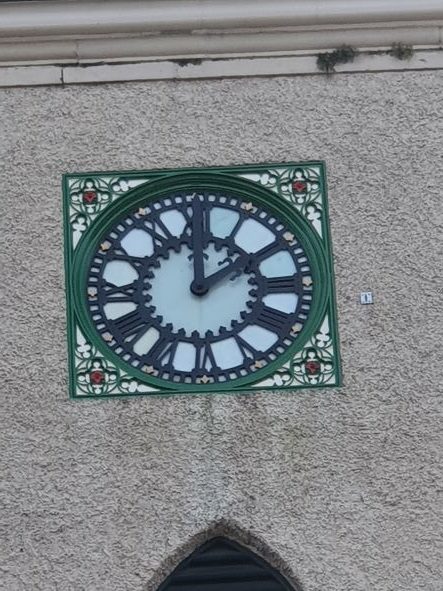Irvinestown clock restored to former glory
29th November 2021

The Irvinestown Clock has been returned to its former glory following a programme of restoration works undertaken by Fermanagh and Omagh District Council.
Located at the southern end of Irvinestown’s main street, the clock tower, which dates back to 1734 and stands at 18 metres high and 5 metres square, is under the care of Fermanagh and Omagh District Council. Originally, there was a chapel of ease at this location and the ancient cemetery can still be seen.
The clock, which dates to approximately 1850, is the last in the district with an original working mechanism, comprising a ‘flat bed’ construction and ‘pin wheel’ escapement.
Having been shrouded in scaffolding for the past number of months, the beautifully restored clock was recently unveiled following the completion of the project.
Speaking about the restoration works to the clock, Chair of Fermanagh and Omagh District Council, Councillor Errol Thompson, said:
“At approximately 170-years-old, the years were taking its toll, with the clock no longer holding the correct time and the clock face in need of repair.
The Irvinestown Clock is a prominent historical feature in Irvinestown and the wider area. As the last remaining clock in the district with an original working mechanism, the Council was committed to maintain it as a piece of working heritage and embarked on a programme of works to sensitively restore the clock face and mechanism so that this important piece of local history is retained for future generations.”
The clock face was refurbished to its original state by skilled craftsmen from the Council’s building maintenance team while the clock mechanism was restored by specialist clock maker, Canavan Clockmakers.
“The transformation has been remarkable and is testament to the care and dedication of those skilled craftspeople involved in the restoration process,” added Councillor Thompson.
An ancient cemetery is located to the rear of the Clock Tower. Headstones, with some dating back as far as the end of the 17th century, depict the skills of earlier stonemasons while wrought iron gates at the cemetery entrance reflect the workings of the clock. The oldest recorded headstones are Hubert Holmes, 18 February 1694; Daniel Irvine 15 March,1702; and Catherine Kennedy 27 March, 1710.
